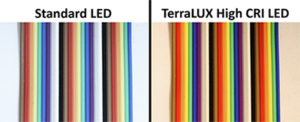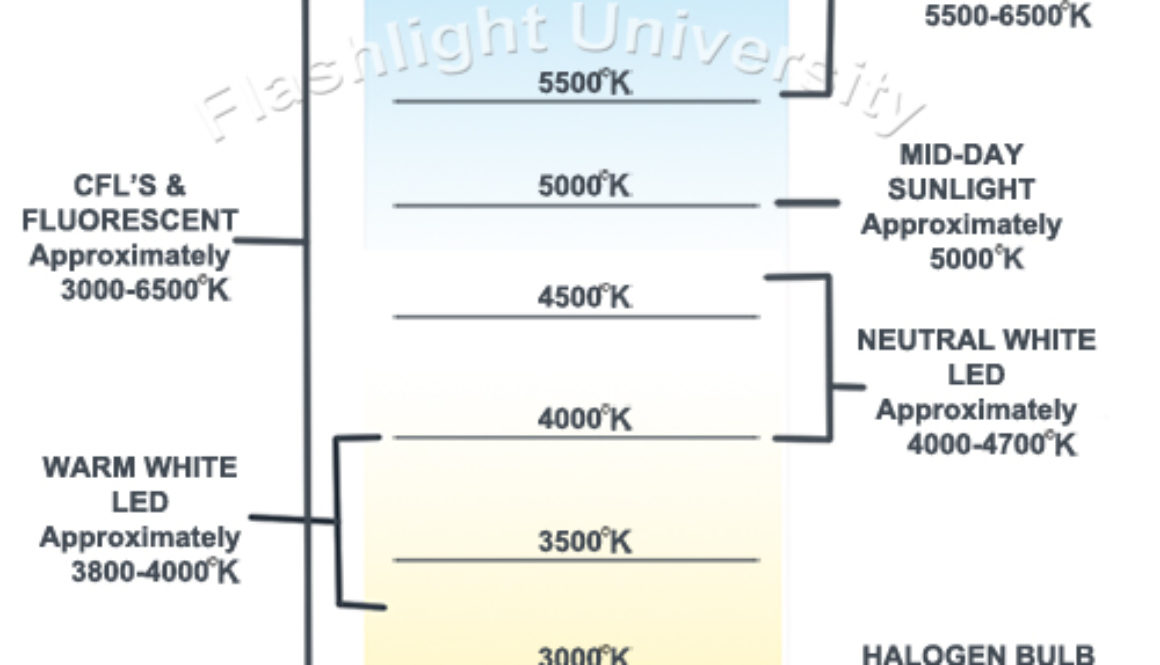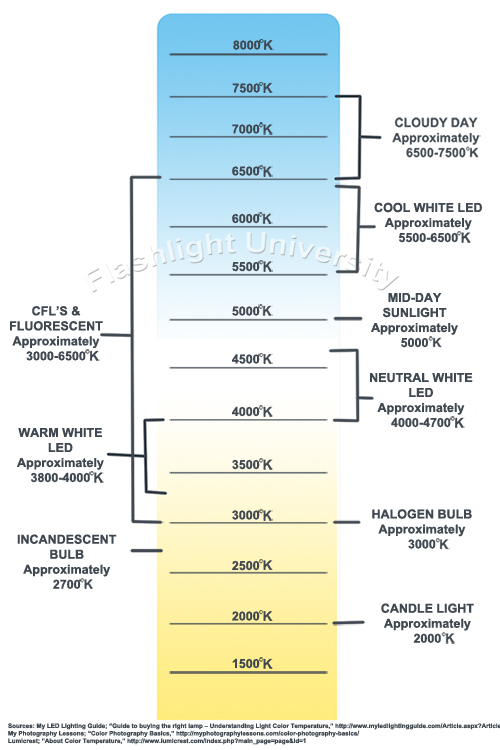Flashlight Color Temperature
With LEDs now dominating the flashlight market, everyone seems to be in the hunt for a flashlight with the perfect color temperature. While the “perfect” color temperature can vary based on your application and personal opinion, it is helpful to know some information about LEDs and what is available before making a decision.
“Color Temperature” refers to the tint of the light given off by a flashlight. Why do we use the term “temperature” to describe the color? This term comes from the world of physics. When a black object such as a piece of iron is heated up, it changes color depending on the temperature that it’s heated to. When iron gets hot enough, it begins to glow red, then orange, then white, and eventually blue. Even after the iron melts, you could keep heating it up and the color of its glow would continue to change relevant to its temperature.
When it reaches a temperature of 2700º Kelvin, its glow will roughly match the color of light emitted by your typical incandescent bulb, with a yellow tint. Because of the yellowish color produced, 2700K is generally referred to as “warm white.” The terms “warm” and “cool” in relation to color temperature can be misleading because as the color temperature of the light goes up, the tint actually becomes bluer. It might seem counterintuitive to call a lower color temperature light “warm light” and a higher color temperature light a “cool light,” but it stems from the way people have traditionally called yellow a “warm” color, and blue a “cool” color. The diagram below lists some common sources of light and their approximate color temperatures.

Why does all this matter for flashlights? First of all, some people say that a certain color temperature is better or worse for viewing objects up close or at a distance. While personal preferences may vary, warm colored LEDs are typically better for close up work and for color rendition and cool colored LEDs are typically better for illuminating objects at a distance. Cool LEDs also work well with night vision because the eye responds faster to cool colored lights when the eyes have adjusted to complete darkness. Originally, most LED flashlights had bluer, cooler colored outputs, but now manufacturers like SureFire and TerraLUX are making products that specifically feature warm colored LEDs.
Color temperature in flashlights is an ongoing discussion. The majority of consumers do not necessarily think about color temperature while purchasing a flashlight. But with all the products available now, it makes it easier to pick and choose between the features that are important to you.
Click here to visit BrightGuy.com. BrightGuy stocks over 450 types of flashlights and is an authorized distributor for Streamlight, SureFire, Fenix, Underwater Kinetics, Princeton Tec, Petzl, LED Lenser, Pelican, and more.
Sources:“Eye Spectral and Intensity Response, Contrast Sensitivity”; http://www.telescope-optics.net/eye_spectral_response.htm
“About Colour Temperature” Lumicrest; http://www.lumicrest.com/index.php?main_page=page&id=1
“Guide to Buying the Right Lamp” My LED Lighting Guide; http://www.myledlightingguide.com/Article.aspx?ArticleID=37


